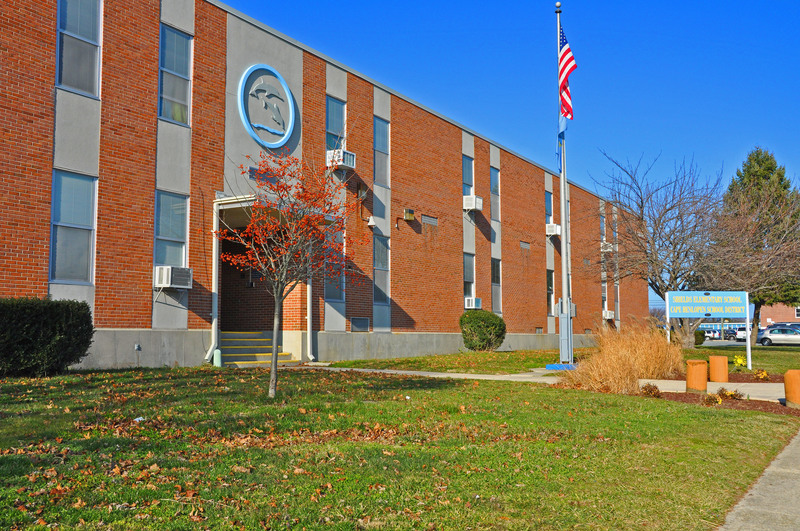A task force is working on a plan for Cape Henlopen elementary schools calling for large, new buildings in Lewes, Rehoboth and at H.O. Brittingham and renovations for Milton Elementary.
“We think we can make a substantive case that we have overcrowding,” said Superintendent Robert Fulton during a Jan. 3 meeting of the facilities planning task force. The group was appointed after a long-range facilities plan was approved by the board in 2012, calling for improving district elementary schools.
The committee is developing a plan it expects to present to the school board in February or March, said Brian Bassett, Cape's director of administrative services. With school board approval, he said, the district would ask in June or July for state approval required before a major capital building project begins. Following district and state approvals, the public would get the chance to decide on the project's fate during a public referendum vote needed to raise taxes in order to pay the local share of construction costs.
Following the task force meeting, Fulton said the current plan is a starting point, which could be changed by the school board; financial details and a time schedule for the proposed construction remain to be worked out.
The five-phase plan calls for a new Shields Elementary school built to house 840 students on the existing Lewes property. The current elementary school could be kept to house students from other schools during their renovations. This plan calls for Sussex Consortium, housed in the Fred Thomas Building on the Lewes property, to move into the Lewes School. District offices currently housed in the Lewes School could be relocated to the Fred Thomas Building. The Osher Lifelong learners who use space in the Lewes School could use space at the Fred Thomas Building under this arrangement, Bassett said.
For now, the plan leaves open how payment for Sussex Consortium improvements would be figured into costs. District taxpayers are not responsible for building improvements at Sussex Consortium; the state pays 100% for consortium construction.
Phase 1 of the current proposal also could include expansion of Beacon Middle School by 12 rooms and another six rooms added to Mariner Middle.
Phase 2 addresses a new 840-student elementary built behind the existing H.O. Brittingham Elementary School, which could be demolished for parking once construction is complete.
The plan does not discuss combining the two Milton elementary schools – Milton and H.O.B – which sit less than a mile apart; each school serves children in grades K-5. A proposal to combine the schools introduced more than a year ago by former Superintendent Kevin Carson was met with outrage by dozens of Milton Elementary school parents who opposed the idea. Carson’s plan was dropped, and the facilities committee task force eventually began meeting to address the district’s future building plans.
Fulton said the committee plans to keep the two schools with their current grade configurations.
Phase 3 proposes a new 840-student school at Rehoboth Elementary, combining the two buildings there into one.
Phase 4 proposes renovating and expanding Milton Elementary to 840 students; phase 5 could include the demolition of the existing Shields Elementary.
Asking the state to fund construction projects for 840 students at the elementary schools may be ambitious, said Dave Robinson, former interim superintendent at Cape.
“It could cause funding problems in the future,” he said, referring to Cape’s ability to receive state funding for additional building projects if the existing buildings are not filled to capacity. A study of district demographics with a good understanding of where future growth may be is an important part of determining the district’s building needs, he said. Keeping the elementary school population closer to 600 is also more manageable, he said.
“Eight hundred and 40 students in one building is a lot,” he said. “We need to ask why are we building such big schools in Rehoboth, Lewes and Milton when all our growth is out Route 9.”
A transportation map detailing the number of students who ride school buses within the district shows significant elementary student population west of Route 1, where about 300 students live in and around the Route 9 and Route 24 corridors.
After presenting the five-phase proposal, the committee also discussed building a new elementary school to serve the growing population west of Route 1. Several committee members agreed students west of Route 1 could be redistricted to the new school, easing crowding at current elementary schools.
After a few years of substantial student growth during the housing boom, Fulton said, district growth slowed to less than 5 percent growth this year.
Based on the Sept. 30 student count, the district grew by 70 students. Of the elementary schools, only two had increases this year – Shields grew by 46 students and H.O.B. by 15. Milton's enrollment declined by 25 students compared with last year while Rehoboth declined by 13.
Fulton and Bassett said the plan is still a work-in-progress and the committee welcomes community input as the plan develops.
“All of you are going to have people come up to you and say, ‘Why did you do this?’” Bassett said.
“It’s good to hear questions that we haven’t thought of,” Fulton added.
The Facilities Planning Task Force will hold its next meeting 6-9 p.m. Wednesday, Jan. 30, in the library of the Lewes School.
Melissa Steele is a staff writer covering the state Legislature, government and police. Her newspaper career spans more than 30 years and includes working for the Delaware State News, Burlington County Times, The News Journal, Dover Post and Milford Beacon before coming to the Cape Gazette in 2012. Her work has received numerous awards, most notably a Pulitzer Prize-adjudicated investigative piece, and a runner-up for the MDDC James S. Keat Freedom of Information Award.























































